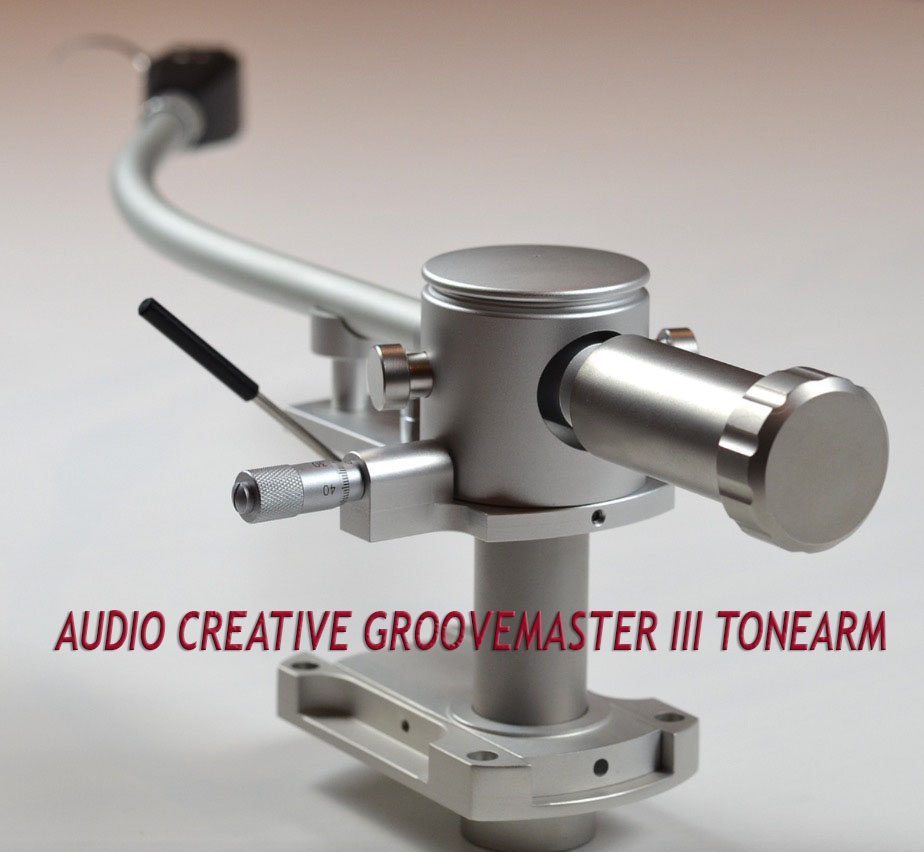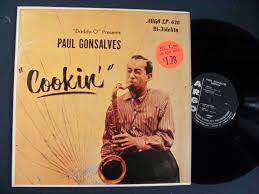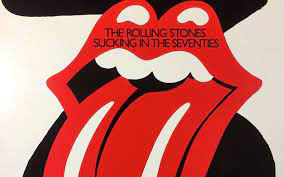Audio Creative GrooveMaster III Tonearm page 2

Setting up the GrooveMaster III
 The Groovemaster III is easy enough to set up but does require some time and patience, primarily because most adjustments have to be made and locked down with Allen keys. Some of the Allen head bolts are tiny, and some are in awkward places. To make the installation process easier, I removed the entire armboard from my Sota (three long screws and it’s out) and did my basic installation on the dining room table. The suppled sliding base fits the SME cut armboard perfectly.
The Groovemaster III is easy enough to set up but does require some time and patience, primarily because most adjustments have to be made and locked down with Allen keys. Some of the Allen head bolts are tiny, and some are in awkward places. To make the installation process easier, I removed the entire armboard from my Sota (three long screws and it’s out) and did my basic installation on the dining room table. The suppled sliding base fits the SME cut armboard perfectly.
Then I re-installed the entire assembly back onto my Sota and set about doing my alignments. One smart detail is the inclusion of a small dimple on top of the bearing housing allowing for accurate pivot-to-spindle setup using any of the pin-type alignment protractors (Dr. Feickert, SMARTracker, Brinkman, et al.). However, once the distance is set, it’s important to remember to tighten the Allen bolts on both sides of the sliding track; otherwise, the arm will not be stable (Ask me how I know this). VTA is done the old-fashioned way by releasing an Allen-bolt, raising or lowering the arm tube until the desired angle is achieved, then locking it back down. This Allen-bolt is at the rear of the collar underneath the counterweight, which is a little awkward to reach. The GrooveMaster III is also adjustable for azimuth, but my headshells are all adjustable on the roll axis, so I chose to preserve the arm’s factory setting.
In the first version of this article, I was prepared to write that setting VTF was a real if not insurmountable pain in the ass, largely due to a sliding weight that had to be locked down with an Alan-key. On multiple – many multiple – occasions, I achieved exactly 1.75g tracking force only to knock the weight out of position as I tried to insert a very small key into a very small bolt. Stating that this was not ideal for setting VTF in increments of 1/100ths of a gram would have been a gross understatement.
Fortunately, in the middle of this review, a new and improved counterweight system became available and will be included with all new tonearms. The new weight consists of a chrome sleeve with a tubular weight over it. Screw your desired endcap weight onto the end of the tube and slide the assembly onto the arm tube. Then figure out the spot where that assembly is a bit heavier than you need VTF to be. I went with 205g, but precision is not important at this point. Now, tighten down the Allen bolt on the Chrome sleave. The weight, which is threaded on the sleeve, will now adjust with a twist, just like most other tonearms. This setup is significantly easier to use, and I was able to dial in exactly 1.75g with a minimum of fuss. Also, I noted that the end of the Allen bolt on the inside of the weight has a rubber cap on it to prevent scoring of the arm-tube – a nice touch.
One other set up note: don’t skip setting the anti-skate force. Many people don’t bother with it, and some tonearms don’t even offer it, but I found it worthwhile on the GrooveMaster. The manual offers a chart with suggested compensation for a given tracking force and a clear photograph to show what those measurements look like on the dial since the left-to-right settings aren’t numbered—the Lyra Delos tracks at 1.75g. The chart recommends a setting of 5.5 for a cartridge tracking at 1.5g and 5.0 for one tracking at 2g, so I split the difference and set the dial at 5.25. The result was noticeably reduced surface noise, which is always worthwhile. Even older, less-than-pristine records realized an improvement.
Installed and adjusted, the GrooveMaster II is a sharp-looking tonearm, even on my scruffy thirty-five-year-old Sota (She may not look like much, but she’s got it where it counts, kid. – H. Solo). The arm conveys high-quality mechanical purpose, and the chrome sleave on the new counterweight even dresses it up a bit. One of the quirks of the nine-inch version is that it requires a more pronounced curve than the longer versions. Where the twelve-inch has a gentle arc from the bearing to the headshell, the shorter arm throws a real left-hook. Of course, no one should choose a hi-fi component based solely on looks, but there’s nothing wrong with scoring a few aesthetic bonus points.
It’s Got the Goods – Lyra Delos
 I spent a lot of time with Sonny Rollins’ Way Out West (Analog Productions APJ 008, S7107, 1992) during this review. The genius of the opening track, “I’m an Old Cowhand,” is that Rollins took a cornball, throw-away Johnny Mercer movie tune and turned it into a jazz masterpiece. Backed by the A-plus west-coast rhythm section of Ray Brown and Shelly Manne, the tune trots through the melody before heading further out onto the range than that old cowhand ever expected. I’m sure I’m not alone in this, but the first time I heard the opening bars, I thought to myself, “WTF is this?” but only briefly. Once past the first statement of the melody, it’s five minutes of the finest jazz improvisation as you’ll ever hear.
I spent a lot of time with Sonny Rollins’ Way Out West (Analog Productions APJ 008, S7107, 1992) during this review. The genius of the opening track, “I’m an Old Cowhand,” is that Rollins took a cornball, throw-away Johnny Mercer movie tune and turned it into a jazz masterpiece. Backed by the A-plus west-coast rhythm section of Ray Brown and Shelly Manne, the tune trots through the melody before heading further out onto the range than that old cowhand ever expected. I’m sure I’m not alone in this, but the first time I heard the opening bars, I thought to myself, “WTF is this?” but only briefly. Once past the first statement of the melody, it’s five minutes of the finest jazz improvisation as you’ll ever hear.
For years I’d felt that the original mono pressing was superior: more present and realistic. I’d always put the difference down to a pressing that was made when the tape was fresh in 1957 versus a pressing taken from the same tape thirty-five years later. The AP reissue always seemed to suffer a few flaws: it was a little dark, almost hooded compared to the original, and in particular, the hard-panning of the instruments was utterly unnatural, with Rollins’ horn sitting right on top of the left speaker and everyone else as far away as possible at the right, crowded into the tower. There are a lot of records that suffer from hard-panning, but this one always seemed like an anomaly for Contemporary Records’ excellent engineer, Roy DuNann.
Changing the tonearm made all the difference. The darkened atmospheric quality of the stereo record was alleviated, leaving the music well-lit. The stereo bass still does not have quite as much slam as the mono original, but it’s close to parity, and now it has far better tone, texture, and solidity than it did with the Jelco. Perhaps most importantly, the imaging was released from the constraints of the speakers. The musicians are still placed left and right, but now they’re all floating between the towers in a decent facsimile of a soundstage. Ray Brown and Shelly Manne are separated, no longer sounding as though they’re sharing a single folding chair inside an MDF box, and Rollins, while still standing alone, is in the room, not in the speaker. It’s a far more natural stereo image, more in keeping with what I’d expect of Roy DuNann’s work.
The tonearm didn’t do anything to alter the Delos’s cool, somewhat analytical presentation. It definitely still sounded like the same cartridge, but its performance was enhanced. With most well-engineered stereo records, image smearing was significantly reduced, leaving solid, clearer, more finely delineated instruments on the playing field. The soundstage became more three-dimensional, fully realized, and authoritative. I played a variety of music: the Kinks, Pink Floyd, Haydn, and more than a few Music Matters Blue Note reissues, and on and on. The story was the same with all of them. There’s no doubt that the GrooveMaster III is providing the Lyra Delos with a more symbiotic platform, allowing the cartridge to more completely fulfill its promised capabilities. I was genuinely surprised at how big an improvement the tonearm made.
Grooving with the Spirit
Next, I swapped out the Lyra in favor of my trusty Miyajima Spirit Mono cartridge. In combination with the Rek-o-Kut T-12h turntable and the Karmadon damped unipivot tonearm the Spirit has always sounded a bit like vintage hi-fi: a little diffuse, a little rolled off in the treble, warm, and a bit sweet. I’d always assumed that this was likely the cartridge’s own bias along with the inherent limitations of a seventy-year-old turntable and a tonearm that is the direct descendent of the 1950s era Gray Research 108.
 The Spirit, at 8 x 10-6cm/dyne, is a low compliance cartridge which looked to be a good match for the high-mass Groovemaster, and so it was. When I dropped the needle on Paul Gonsalves’ Cookin’ (Argo, LP – 626) before I even made it back into my chair the opening notes of “Festival” startled me with dynamic force. It moved air, and it made me jump! Better still, plenty of new details emerged from the recording. The piano of Willie Jones, comping behind Gonsalves, turned out to be tinkling arpeggios with surrounding atmosphere where only mere chords existed before. The bass dropped bombs with every plucked note, and the cartridge revealed newfound transparency and clarity. Any thoughts of a vintage-sounding cartridge passed immediately in favor of an extended top end, bold tonal colors, and a significantly more extroverted presentation. The GrooveMaster wrought an even greater improvement on the Spirit Mono than it had on the Lyra Delos. Despite listening to and enjoying it daily for the past three years, I really did not appreciate how good this cartridge could sound until I installed it on this tonearm.
The Spirit, at 8 x 10-6cm/dyne, is a low compliance cartridge which looked to be a good match for the high-mass Groovemaster, and so it was. When I dropped the needle on Paul Gonsalves’ Cookin’ (Argo, LP – 626) before I even made it back into my chair the opening notes of “Festival” startled me with dynamic force. It moved air, and it made me jump! Better still, plenty of new details emerged from the recording. The piano of Willie Jones, comping behind Gonsalves, turned out to be tinkling arpeggios with surrounding atmosphere where only mere chords existed before. The bass dropped bombs with every plucked note, and the cartridge revealed newfound transparency and clarity. Any thoughts of a vintage-sounding cartridge passed immediately in favor of an extended top end, bold tonal colors, and a significantly more extroverted presentation. The GrooveMaster wrought an even greater improvement on the Spirit Mono than it had on the Lyra Delos. Despite listening to and enjoying it daily for the past three years, I really did not appreciate how good this cartridge could sound until I installed it on this tonearm.
We Interrupt This Review….
BOOM!!! Right on schedule, there go the exploding KT88s. UPS delivery in five, four, three, two…aaand… we’re back!
Toe Tapping with the Ortofon SPU-#1s
I picked up an Ortofon SPU-#1s during quarantine last year. It was an impulse purchase driven by curiosity, but after it arrived, I never got around to setting it up. Since the GrooveMaster seems to have been developed with the big bullet cartridges in mind, it seemed like a good opportunity to give this dinosaur a ride.
SPU users are a bit of a cult within the analog world. These fat-bodied holdovers (the cartridges, not the users) from the 1950s are definitely outside the cartridge mainstream, but people who love them swear by them. They’re generally very low compliance, very low output cartridges (This one puts out a mere 0.18mv), and they can be had with a variety of stylus profiles. The “S” in #1s labels it as a spherical tip, the entry-level model.
With the cartridge mounted inside a closed, zeppelin-shaped fixed headshell, there’s effectively no way to adjust overhang unless you’re able to move the entire arm, so an SME-style sliding mount is very helpful. Once I installed the cartridge, I set up the Dr. Fieckert’s protractor and reconfirmed the exact 229mm spindle to pivot distance. The stylus alighted precisely on the protractor’s hash mark. Kudos to Audio Creative for baking the overhang into the arm so accurately. The vertical line on the front of the cartridge was also perfectly vertical using a lined Lucite block, suggesting that the factory azimuth setting was spot on. And really, shouldn’t every cartridge have a vertical line on the front of it for this purpose?
 As expected, at around $600 the SPU #1s does not have the crystalline, grain-free resolution of the Delos or the boisterous personality of the Spirit. The treble isn’t as extended, and it’s a bit noisier in the groove than I’d like, but it throws a dense, saturated soundstage, and boy does this thing jump! The GrooveMaster II and the SPU #1s delivered tons of toe-tapping, boogie-woogie, rhythmic fun. The Rolling Stones Sucking in the Seventies grooved relentlessly: the soundtrack of five debauched English libertines partying through the seedier crevices of Manhattan in the wee hours (Well, four debauched libertines, really. Charlie generally stayed at the hotel, RIP). Never having listened to this cartridge, I can’t tell you how much of the fun was the arm and how much was the pickup, but it was clear that both components were very happy playing together. The SPU-#1s isn’t the last word in high fidelity, but it was a blast to listen to installed on this arm.
As expected, at around $600 the SPU #1s does not have the crystalline, grain-free resolution of the Delos or the boisterous personality of the Spirit. The treble isn’t as extended, and it’s a bit noisier in the groove than I’d like, but it throws a dense, saturated soundstage, and boy does this thing jump! The GrooveMaster II and the SPU #1s delivered tons of toe-tapping, boogie-woogie, rhythmic fun. The Rolling Stones Sucking in the Seventies grooved relentlessly: the soundtrack of five debauched English libertines partying through the seedier crevices of Manhattan in the wee hours (Well, four debauched libertines, really. Charlie generally stayed at the hotel, RIP). Never having listened to this cartridge, I can’t tell you how much of the fun was the arm and how much was the pickup, but it was clear that both components were very happy playing together. The SPU-#1s isn’t the last word in high fidelity, but it was a blast to listen to installed on this arm.
Conclusion – This Banana is No Joke
In an email conversation, Marco Bouwer of Audio Creative said they’d seen an uptick in sales after SME and Jelco exited the marketplace, and I can see why. Demand for high-quality tonearms, while never as strong as it is for turntable combos, did not diminish with the exit of those two venerable companies. And there are other manufacturers ready to fill the gap. Individual tonearms may remain a specialty within the broader analog equipment marketplace. Still, there are always going to be people looking for an upgrade path or who just want to choose their own arm to install on whatever turntable they’re spinning.
The Audio Creative GrooveMaster III is the real deal: a very high-quality, high-mass design that makes terrific music with my collection of moving coil cartridges. I was genuinely and pleasantly surprised by how much it improved the performance of my pickups, particularly in detail retrieval, image focus, and soundstaging. You know, all the good stuff. Add the super cool banana-shaped aesthetic appeal and its genuinely solid value, and you’ve got a winner all the way around. In fact, I like this tonearm so much I’m going to see if I can scrape together enough dough to grab the twelve-inch version to install on the Rek-O-Kut. If the combination of the idler drive, Spirit Mono cartridge, and a long GrooveMaster don’t make fantastic music, I’ll eat my hat.
If, for some reason, it’s still unclear that I’m enthusiastic about this tonearm, allow me to reiterate: I am enthusiastic about this tonearm. If you’re considering upgrading the arm on your turntable, the Audio Creative GrooveMaster III should be on your short-list. It has a long list of mechanical, aesthetic, and most importantly, sonic virtues. Very highly recommended.
One Last Note
When I bought this tonearm and began this review, what I actually had on hand was the GrooveMaster II. With the addition of the upgraded counterweight and arm lift, my tonearm is now fully upgraded to the new GrooveMaster III. The weight and the lift are the only changes to the arm. Everything else – bearings, anti-skate mechanism, arm-tube, etc. – are all unchanged from the prior version. The new weight and lift are available as updates for any GrooveMaster II arms currently in use.


greg simmons
Specifications
- High-precision semi-ceramic horizontal and vertical bearings
- Milled stainless steel bearing housings
- Titanium armtube
- Magnetic anti-skate with integral micrometer
- Effective mass: 22g
- Recommended cartridge compliance:
- 9” pivot to spindle: 229mm
- Cardas tonearm wire
- Cardas five-pin DIN cable connection
- SME mount headshell connector
Pricing
Pricing for the 9-inch GrooveMaster III is currently listed at €1,731 excluding VAT, or about USD 2,050. Recent price increases reflect product upgrades.
Audio Creative
Mockingbird Distribution
www.mockingbirddistribution.com
Greg’s Associated Equipment:
Analog Front End
SOTA Sapphire turntable w/Audio Creative Groovemaster III Tonearm
Rek-O-Kut T12h turntable w/Karmadon 12” viscous damped unipivot tonearm
Lyra Delos cartridge
Miyajima Spirit Mono cartridge
Audio-Technica OC/9-III cartridge
Audio-Technica AT33Sa cartridge
Digital Front End
Cambridge CXC CD transport
Cambridge 840C CD player
(Good thing these two have each other, or they wouldn’t have anyone at all)
Amplification
Cary SLP-98P preamp w/ phono stage
Cary CAD 280 SA V12R power amplifier
Aurorasound SP-03H step-up transformer
Lyric Audio PS-10 MC/MM phono stage
Loudspeakers
Verity Audio Fidelity Encore
Cabling
Finley Audio Cirrus interconnects, speaker, and power cables.
Zentara Reference interconnects and speaker cables.
A variety of other wires from Nordost, Cullen, AudioQuest and MIT.
Accessories
AudioQuest Niagara 1200 power conditioner
Tice Box power conditioner
Nordost Sort Kones AC vibration dampers
Mapleshade Audio Rack
Stereo Times Masthead
Publisher/Founder
Clement Perry
Editor
Dave Thomas
Senior Editors
Frank Alles, Mike Girardi, Key Kim, Russell Lichter, Terry London, Moreno Mitchell, Paul Szabady, Bill Wells, Mike Wright, Stephen Yan, and Rob Dockery
Current Contributors
David Abramson, Tim Barrall, Dave Allison, Ron Cook, Lewis Dardick, Dan Secula, Don Shaulis, Greg Simmons, Eric Teh, Greg Voth, Richard Willie, Ed Van Winkle, and Rob Dockery
Music Reviewers:
Carlos Sanchez, John Jonczyk, John Sprung and Russell Lichter
Site Management Clement Perry
Ad Designer: Martin Perry







Be the first to comment on: Audio Creative GrooveMaster III Tonearm page 2